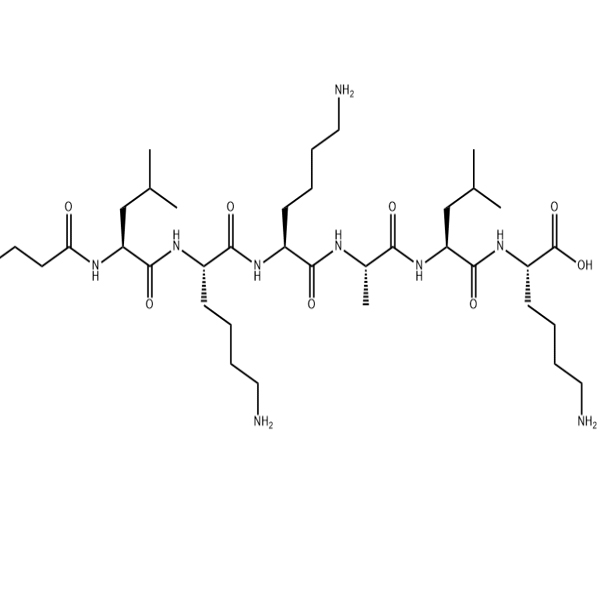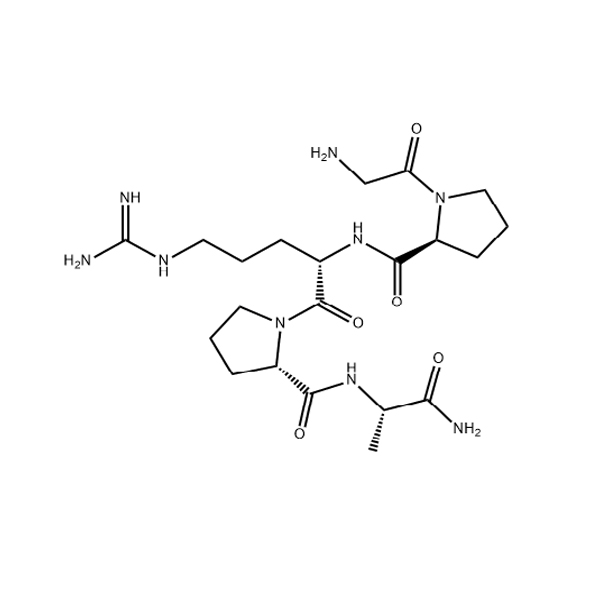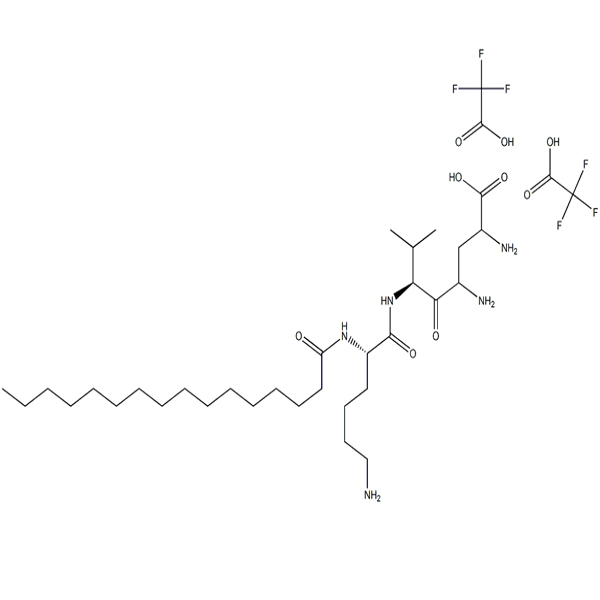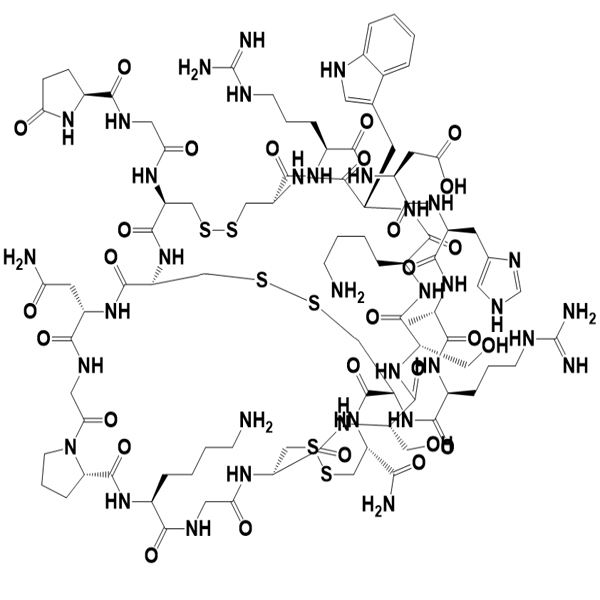Myristoyl Hexapeptide-16/959610-54-9/GT Peptide/Peptide Supplier
Description
The polypeptide myristyl hexapeptide 16(mascara peptide) contains a potent hexapeptide that promotes lash and head growth. It directly activates keratin genes, which leads to lash/hair growth and thickening.
Specifications
Apperance: White to off-white powder
Purity(HPLC): ≥98.0%
Single Impurity: ≤2.0%
Acetate Content(HPLC): 5.0%~12.0%
Water Content (Karl Fischer): ≤10.0%
Peptide Content: ≥80.0%
Packing and Shipping: Low temperature, vacuum packing, accurate to mg as required.
How To Order?
1. Contact us directly by phone or email: +86-13735575465, sales1@gotopbio.com.
2. Order online. Please fill out the order online form.
3. Provide peptide name, CAS No. or sequence, purity and modification if required, quantity, etc. we will provide a quotation within 2 hours.
4. Order conformation by duly signed sales contract and NDA(non disclosure agreement) or confidential agreement.
5. We will continuously update the order progress in time.
6. Peptide delivery by DHL, Fedex or others, and HPLC, MS, COA will be provided along with the cargo.
7. Refund policy will be followed if any discrepancy of our quality or service.
8. After-sale service: If our clients have any questions about our peptide during experiment, please feel free to contact us and we will respond to it in a short time.
All products of the company are only used for scientific research purpose, it’s prohibited to be directly used by any individuals on human body.
FAQ
What are the limitations on the length of synthetic peptides?
The polypeptide synthesized by our company is 6 ~ 50 amino acids in length. Standard solid-phase synthesis procedures typically produce peptides of 6 to 50 amino acids.
How to explain the P+Na and P+K peaks in MALDI(MS)?
Peaks Na and K are often seen in MALDI, and sodium and potassium come from solvent water. Even distilled and deionized water can contain trace amounts of sodium and potassium ions that can’t be completely removed. They also ionize and bind to the free carboxyl group of the peptide during mass spectrometry. Because there is no purification system to remove sodium and potassium ions from the water, it is sometimes inevitable that sodium and potassium peaks appear in the MALDI MS map.
Please describe your purification strategy
The peptides synthesized by our company were purified by preparative reversed-phase HPLC with TFA and pH 2 added to both mobile phases. Phase A is 0.1% TFA in ultra-pure water, and phase B is 0.1% TFA in ACN, pH 2. The sample can be dissolved directly in A phase, or dissolved in A small amount of B phase and diluted with A phase. Sometimes it may be necessary to dissolve hydrophobic peptides with strong solvents such as formic acid or acetic acid, depending on the sequence of the peptide. At pH 6.8, it is generally difficult to dissolve and purify the peptide, so we generally dissolve the peptide first and then use two mobile phases for gradient elution. The buffer solution at pH 6.8 was 10 mM ammonium acetate in ultra-pure water (mobile phase A), pure ACN (mobile phase B). Different components were collected and identified by MADLI-TOF MS. Purity was analyzed by reversed-phase HPLC. Then, the target peptides were lyophilized, and the lyophilized peptides were combined into small vials.
How do you monitor your products?
All synthetic peptides were analyzed by HPLC and MS, except MALDIMS. Since peptides are ionized in their own sequences in different mass spectrometers, HPLC-MS techniques can be used to analyze those peaks of ionization in HPLC. Our technical equipment [MALDI-MS, HPLC-(ESI)MS (ion trap and tetrode array)] provides reliable assurance for analysis.
Is the solubility of the peptide related to the quality of the peptide?
The synthetic peptides don’t dissolve well, the peptides have a problem, right?
A: It is difficult to predict exactly how soluble a peptide is and what the appropriate solvent is. It is not true that there is a problem with peptide synthesis if it is difficult to dissolve.
How do you preserve peptides in solution?
If you must store your peptides in liquid, use a sterilized buffer at PH 5-6 and store at -20℃ to extend the life of your peptides in solution.
How long do peptides last in solution?
It is best not to store residual peptides in solution. The shelf life of polypeptides in solution is very limited, especially those with cysteine, methionine, tryptophan, asparagic acid, glutamic acid, and N-terminal glutamic acid in the sequence. In general, take out the necessary amount of use, the rest of the freeze dried for long-term storage.







